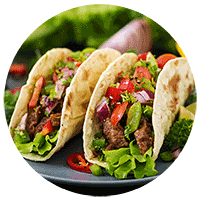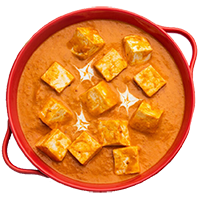Japanese are renowned as the most polite people in the world. We aren’t sure if their politeness has anything to do with their cuisine, but we can guarantee you that Japanese cuisine is one of the world’s most hearty, rich, and healthy cuisines. And it is also one of the most in-demand cuisines. Sushi has been winning hearts across the globe. And, if we talk about their food culture and how the Japanese behave while eating, they do reflect their polite nature.
The Japanese spirit of appreciating nature is the foundation of what the Japanese eat, how they process and cook what they eat, and how they consume. Because we believe in eating healthy, here in Lopen Raj, Japanese cuisine is a big part of the menu. And today, we have decided to share some lesser-known yet intriguing facts about Japanese food. If you love Japanese food, stick around till the end.

- If you think fortune cookies originated in China, you are wrong. Fortune cookies originated in Japan.
- Though Japan has a widespread ramen culture, ramen isn’t originally from Japan. Rather, soba and udon are traditional Japanese noodles.
- Matcha is one of Japan’s most well-known beverages. Green tea was introduced to Japan more than 1,000 years ago by a Japanese Buddhist monk from China.
Before the Kamakura Shogunate became aware of the intriguing drink, the tea ceremony, including matcha (powdered green tea leaves), became part of religious rites in Buddhist temples. Matcha quickly became a status symbol among the warrior class, with only monks and samurai able to purchase it.
- Traditional Japanese cooking techniques, or goho, are divided into five categories:
- Nama- Cutting. Frequently seen in sushi (raw fish).
- Musu – steaming
- Yaku – grilled
- Niru – cooking or immersing things in hot dashi, water, or liquid seasonings
- Ageru – deep-frying at high temperatures for a short time without losing flavor
If you order Japan’s traditional course dinner, you can enjoy all five cooking methods in one sitting.

- Japanese food is more than just delicious. The use of goshiki (five colors) in preparation and plating increases the appetite, conjures a refreshed and clean feeling, and finally makes the food visually appealing.
- Wasabi, pickled ginger, shiso, and myoga (Japanese ginger) are among the yakumi, or “medical flavors,” that are frequently served with sushi and sashimi. Yakumi were eaten with sushi to kill bacteria until refrigeration made raw fish safe to eat.
- Wasabi is one of the most expensive plants since it is one of the most challenging foods to grow. Due to this, most wasabi served in restaurants is horseradish flavored with food coloring. The flavor of genuine wasabi is more herbal than that of imitation wasabi.
- Eating meat, in addition to seafood, is a relatively new practice in Japan. Killing animals for meat was formally prohibited until the mid-1800s due to Buddhist beliefs about reincarnation.
- Kikunae Ikeda, a professor at Tokyo Imperial University, discovered umami, the fifth taste, in 1908. He looked into the chemical composition of seaweed because he suspected it had a flavor other than sweet, sour, bitter, and salty. He discovered glutamate. He named the glutamate flavor ‘umami,’ which comes from the Japanese word for delightful, umai.
That’s all for today. If you want to try some good Japanese food here in South Petherton, contact Lopen Raj for a table reservation.














